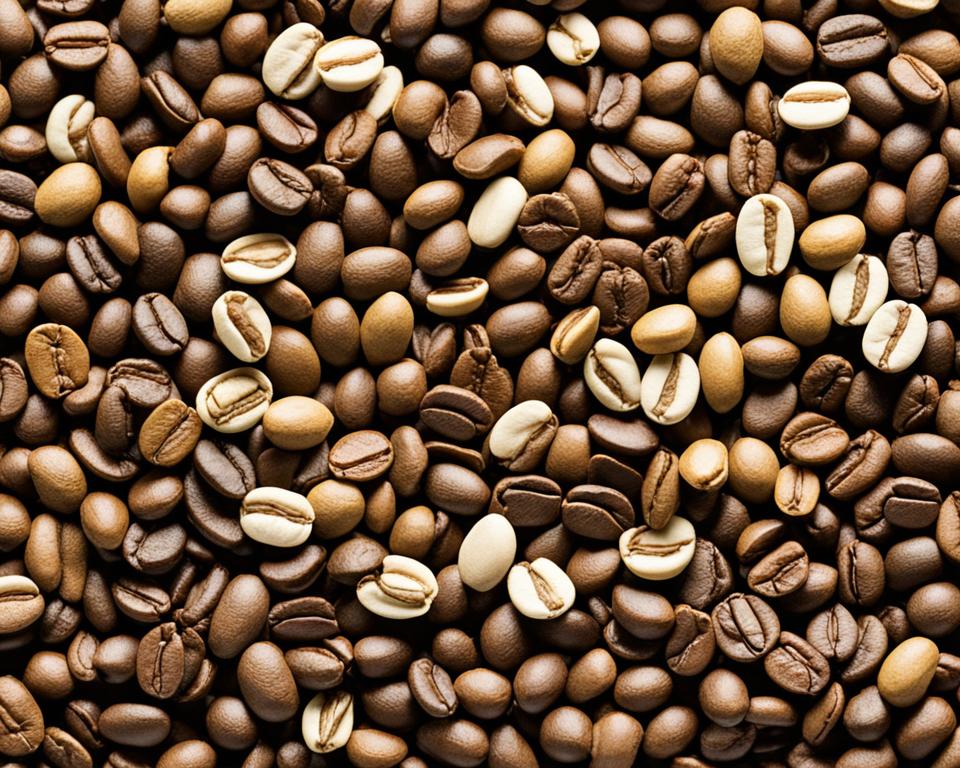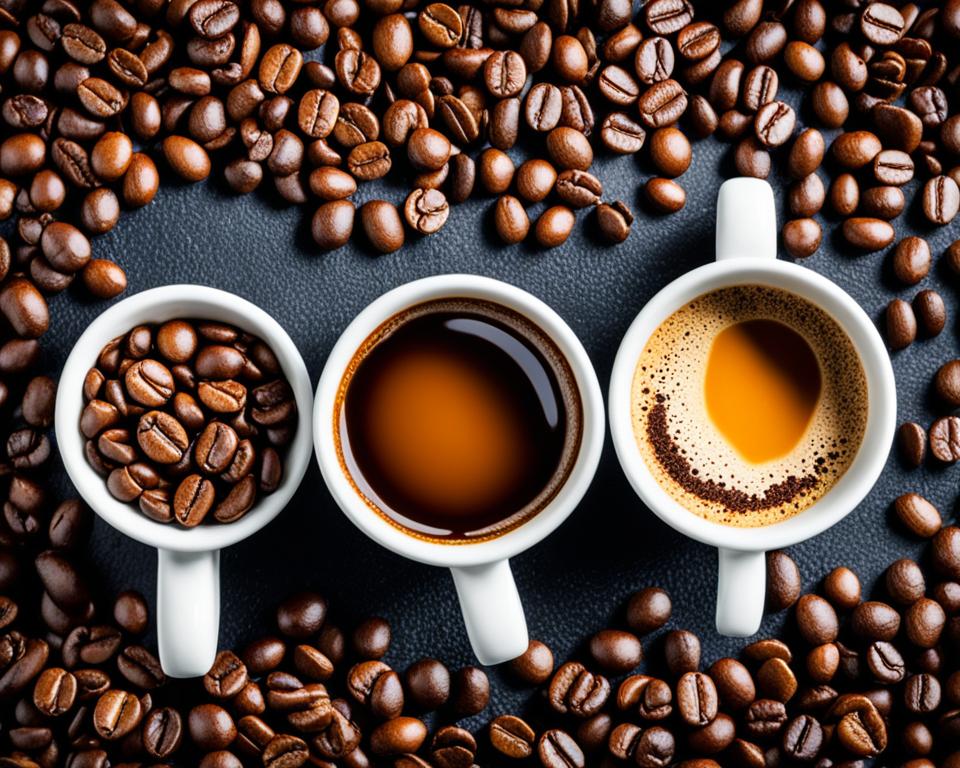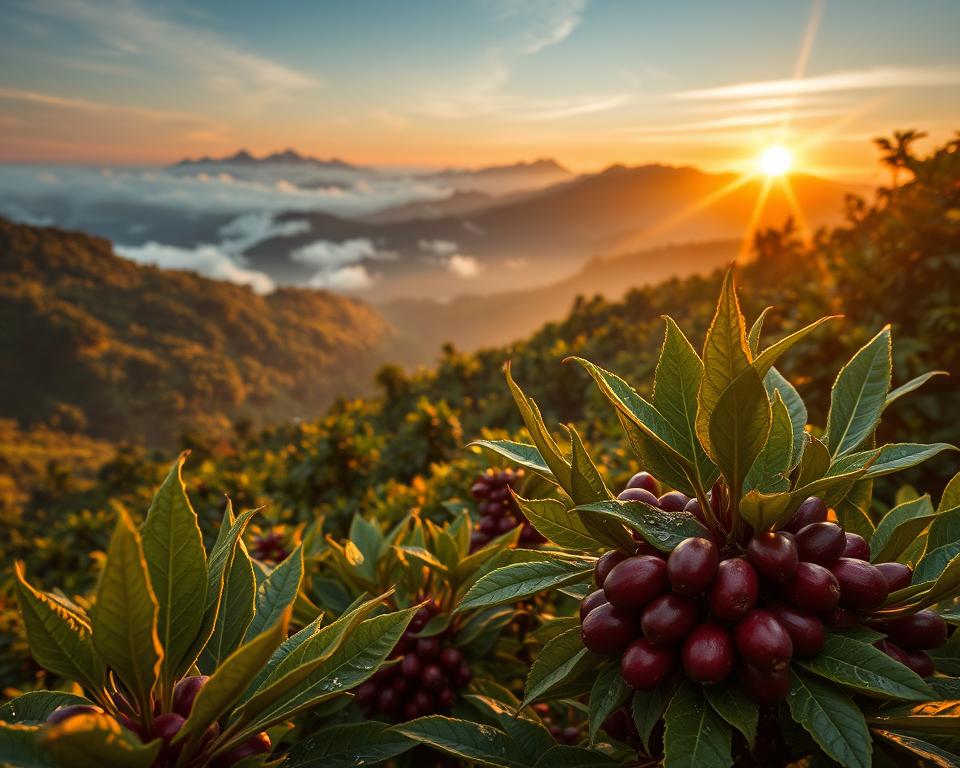Have you ever wondered if there’s truly a difference between regular coffee beans and the beans used for espresso? It’s a common question that many, from curious beginners to dedicated coffee enthusiasts, often ask.
In this article, we’ll unravel the myths and uncover the facts about coffee beans vs. espresso beans. Many people assume they’re completely different, but is that really the case? Let’s journey into the world of coffee education and find out—there’s more to it than you might think!
From understanding the variety of beans to the nuances in preparation methods, we’ll touch on the basics of coffee culture. And, hinting at the intricacies of bean types and how they’re prepared, we’ll see if there’s a genuine difference when it comes to your favourite cup of coffee or that perfect shot of espresso.
Understanding coffee beans
To truly appreciate coffee, it’s essential to understand the different types of coffee beans and how they are processed. Let’s explore the two primary types of coffee beans, their origins, and how they are roasted.
Types of Coffee Beans
The world of coffee primarily revolves around two types of beans: Arabica and Robusta. Arabica beans are known for their smooth and complex flavour profiles, often exhibiting notes of sweetness and acidity.
On the other hand, Robusta beans are more robust, offering a stronger, more bitter taste with a higher caffeine content.
Origin and Growing Conditions
The flavour of coffee beans is not just determined by the type but also by their growing conditions and region of origin. Single-origin beans are those that come from a specific location, offering a unique taste reflective of their environment.
Factors like altitude, climate, and soil play a significant role in shaping the flavour profile of both Arabica and Robusta beans.

For instance, Arabica beans thrive at higher altitudes with cooler climates, which contributes to their delicate flavors. Robusta beans, on the other hand, are more resilient and often grow at lower altitudes under warmer conditions, resulting in their distinctively strong and bitter taste.
Roasting Process
Another critical element in the journey of coffee beans from farm to cup is the roasting process. Coffee roasting techniques range from light to dark roasts, each bringing out different aspects of the flavour.
Light roasting preserves the bean’s original characteristics, offering fruity and floral notes. Medium roasts balance acidity and body, providing a more rounded flavour.
Dark roasts, often used for espresso, enhance the rich and robust qualities of the bean, sometimes introducing smoky or chocolaty notes.
Mastering coffee roasting techniques can significantly influence the final cup, whether you’re using Arabica or Robusta beans, single-origin or blended.
The choice of roast level can tailor the taste to suit personal preferences, making every cup of coffee a unique experience.
A Closer Look at Espresso Beans
Let’s dive into the world of espresso beans! You might wonder, What sets them apart? Well, there’s more to it than meets the eye.
Characteristics of Espresso Beans
Espresso beans are known for their unique qualities. They are typically roasted longer, resulting in a dark roast that’s rich and robust. This deep roasting process helps to bring out the full, bold flavours that are essential for a perfect espresso shot.
Unlike other beans, espresso beans are selected for their ability to withstand the pressure of coffee extraction. This process intensifies their flavours, making each sip a unique experience.
How Espresso Beans Are Roasted
Roasting espresso beans is an art. The process starts with choosing quality green beans. They are then roasted to a dark roast, enhancing the robust and rich flavours needed for espresso. This dark roast profile is critical, as it ensures the beans can handle the intense coffee extraction process.
It’s fascinating how the careful roasting of espresso beans can make such a huge difference in flavor. The precision in roasting creates beans that are perfect for crafting the strong and aromatic espresso that we all love.
Are coffee and espresso beans different?
Many wonder if coffee beans and espresso beans are truly different. This section will help clear the air by examining their key differences and similarities.
Key Differences in Appearance
When subjected to a visual inspection, espresso beans often appear darker and shinier. This is due to their longer roasting time, which brings out the oils on the surface. On the other hand, coffee beans can vary widely in their appearance, from a light tan to a deep brown, depending on the roast level.
Taste profile comparisons
The key to understanding the taste differences lies in the flavour notes. Espresso beans are roasted to bring out a bold, rich flavour, which is perfect for the high-pressure brewing of a shot of espresso.
They typically have a more robust and concentrated taste. In contrast, coffee beans can produce a range of flavours, from fruity to chocolatey, depending on their roast and origin.
The brewing method you choose can significantly influence these flavours.
Now, it’s essential to note how the intended brewing method affects the choice of beans. Espresso requires beans that can withstand the intense pressure of espresso machines, thus preferring a darker roast.
For other brewing methods like drip or pour-over, a medium roast might be more suitable to highlight a wider range of flavour nuances.
How Brewing Methods Impact Flavor
Exploring different brewing methods can reveal a world of diverse coffee experiences. Each method influences the flavour in unique ways, making the choice of brewing style an essential part of the coffee journey.
Here’s how various techniques leave their mark on the final cup.
Influence of Coffee Makers
Whether you prefer a French press, pour-over, or AeroPress, each manual brew method brings out different aspects of the coffee beans. The French press, for example, provides a full-bodied flavour by allowing the coffee grounds to steep.
On the other hand, the pour-over method, with its controlled water flow, highlights the bean’s subtle notes.
Espresso machines and their role
Espresso preparation is a precise art where both the machine and the technique of coffee extraction play significant roles. The high pressure involved in espresso machines extracts a concentrated and rich flavour from the beans.
This method demands beans that can withstand intense pressure and typically results in a strong, aromatic shot of espresso.
Choosing the Right Bean for You
Finding the perfect coffee or espresso bean is a journey of discovery. With countless varieties and flavours available, it’s essential to explore and experiment until you find the one that resonates with your taste buds.
Let’s dive into some practical steps to help you determine your ideal bean.
Tasting and experimenting
The best way to understand the diverse flavours of coffee is by tasting different beans. You can start by sampling various single-origin coffees or blends from renowned coffee roasters such as Intelligentsia or Blue Bottle.
Pay attention to how different roasting levels, from light to dark, affect the flavour profile of the beans. This hands-on approach will broaden your coffee-tasting experience and help you appreciate the nuances in each cup.
Determining Your Favorite
Once you’ve had the chance to taste different beans, take notes on what you like and dislike. Do you prefer the bright acidity of an Ethiopian Yirgacheffe or the bold richness of a Sumatra Mandheling?
Your personal flavour preference will guide you in selecting the beans that best suit your palate. Remember, there’s no right or wrong choice—it’s all about what tastes best to you. Keep experimenting, and you’ll soon discover your perfect cup of coffee or espresso.
FAQ
Are coffee beans and espresso beans different?
Often, people assume that coffee beans and espresso beans are different. In reality, they are not distinct types of beans. The distinction comes down to the preparation and roast level rather than the bean itself. Both coffee and espresso can be made from the same beans, but the method of brewing and roasting sets them apart.
What are the primary types of coffee beans?
The two primary types of coffee beans are Arabica and Robusta. Arabica beans are known for their smooth, slightly acidic flavour and are generally considered to be of higher quality. Robusta beans have a stronger, more bitter taste and contain more caffeine than Arabica beans. These differences make each bean type suitable for different brewing methods and flavour profiles.
How do origin and growing conditions affect coffee beans?
Origin and growing conditions play a significant role in the flavour of coffee beans. Factors like altitude, climate, and soil composition influence the taste. Single-origin beans, which come from a specific region or farm, often have unique flavour notes that reflect their growing conditions, making them popular among coffee enthusiasts.
What Is the Roasting Process, and How Does It Impact Flavor?
Roasting is a critical process that transforms green coffee beans into the aromatic, flavour-rich beans we use to brew coffee. The roast level, from light to dark, significantly impacts the flavour profile. Light roasts are typically brighter and more acidic, with complex flavours, while dark roasts are bolder, with a richer, more robust taste.
What are the characteristics of espresso beans?
Espresso beans are often roasted darker to enhance their bold, rich flavour, which stands up to the intense pressure of espresso extraction. They are selected for their ability to produce a thick, creamy crema and are typically used in a finely ground form to ensure the best extraction results.
How Are Espresso Beans Roasted Differently?
Espresso beans undergo a specific roasting process that usually results in a darker, fuller-bodied roast. This is because the high pressure during espresso extraction requires beans that can deliver a concentrated flavor. The roasting process for espresso beans aims to balance bitterness with sweetness and create a smooth, intense shot of espresso.
What Are the Key Differences in Appearance Between Coffee and Espresso Beans?
In terms of appearance, there might be slight differences in size and colour due to the roasting process. Espresso beans tend to be darker and sometimes oilier than regular coffee beans because they are typically roasted longer. However, these visual differences are a result of the roasting technique rather than the bean type itself.
How Do Coffee and Espresso Beans Differ in Taste Profile?
The taste profiles of coffee and espresso beans vary mainly due to the roasting and brewing methods. Espresso typically has a more concentrated, robust flavour with a thicker consistency, while brewed coffee usually tastes lighter and more nuanced. The choice of bean and brew method can significantly influence these flavour characteristics.
How Do Different Brewing Methods Impact Coffee Flavour?
Different brewing methods, such as drip coffee makers, French presses, and espresso machines, extract flavours from the beans differently. For instance, espresso machines use high pressure to extract a concentrated shot, leading to a richer and more intense flavor. Manual brew methods, like pour-over or French press, offer more control over flavour extraction, allowing for a wide range of taste experiences.
What Role Do Espresso Machines Play in Coffee Preparation?
Espresso machines are essential for preparing authentic espresso shots. They use high pressure to force hot water through finely ground coffee, extracting a dense, flavorful shot with a rich crema on top. The ability to manipulate pressure, temperature, and grind size allows for precise control over the espresso’s flavour and consistency.
How Can I Choose the Right Coffee Bean for Me?
Choosing the right coffee bean involves tasting and experimenting with different types and roast levels. Personal preference plays a significant role, so try various beans, from light to dark roasts, and note the flavours you enjoy most. Over time, you’ll hone in on your favourite beans and brewing methods that cater to your individual taste.
What Tips Are There for Determining My Favorite Coffee?
Start by sampling a variety of single-origin beans and blends. Pay attention to the flavour notes, body, acidity, and aroma of each type. Keep a tasting journal to record your impressions, and don’t be afraid to experiment with different brewing methods. Over time, you’ll develop a deeper understanding of your preferences and find the perfect coffee that suits your palate.




